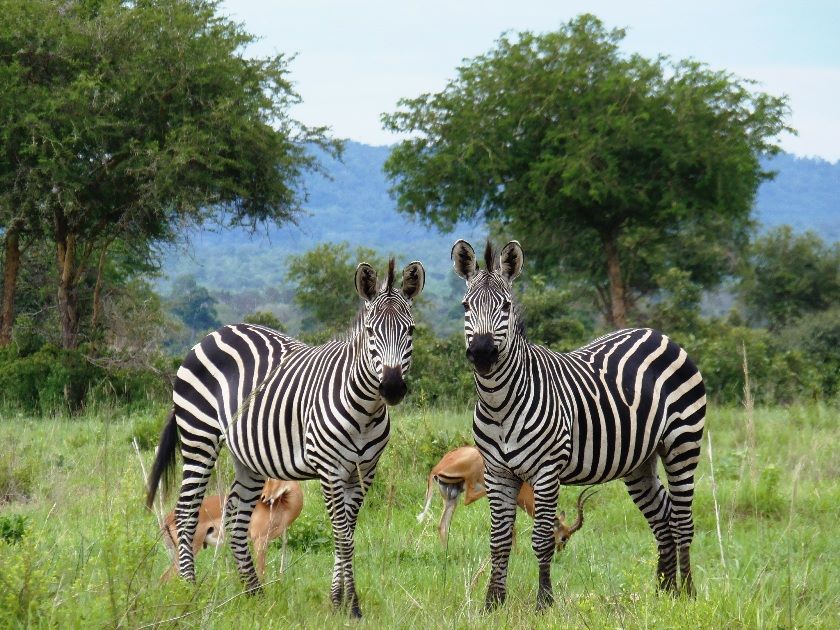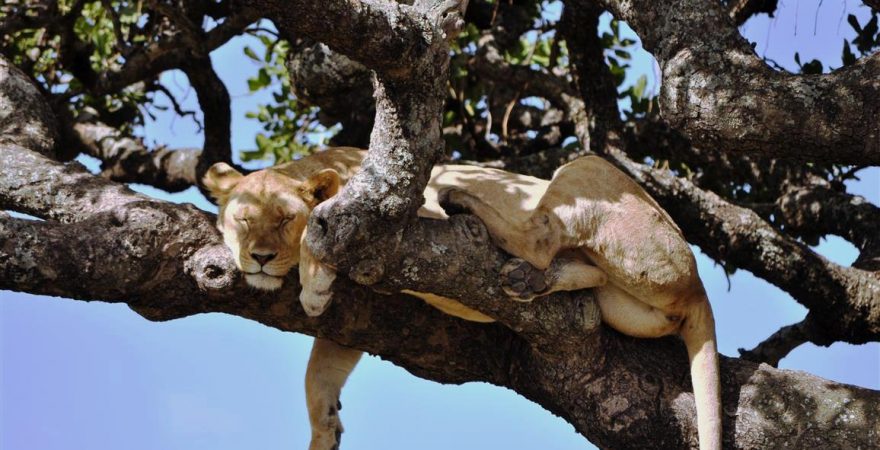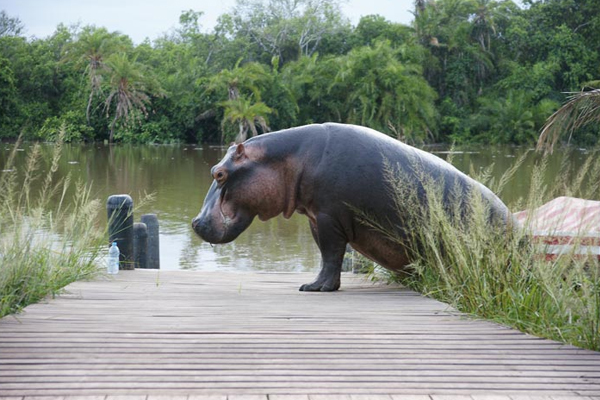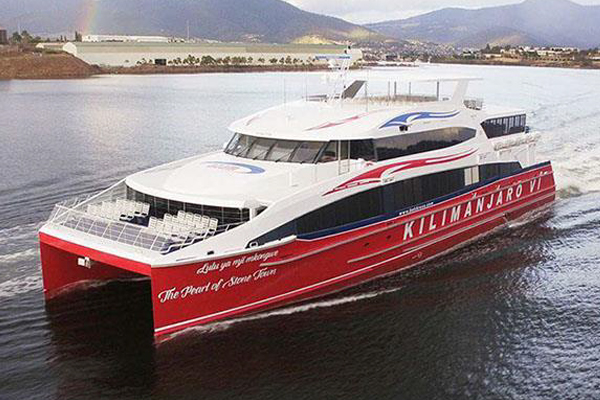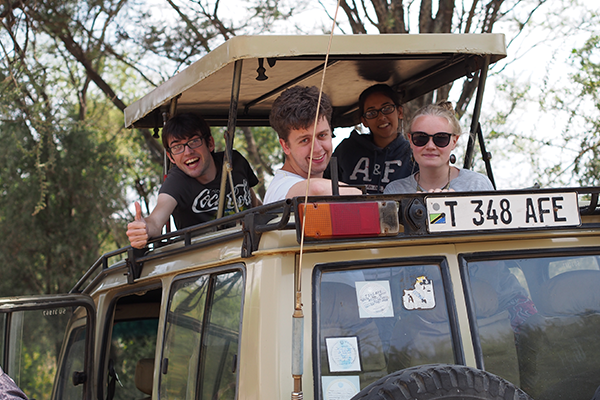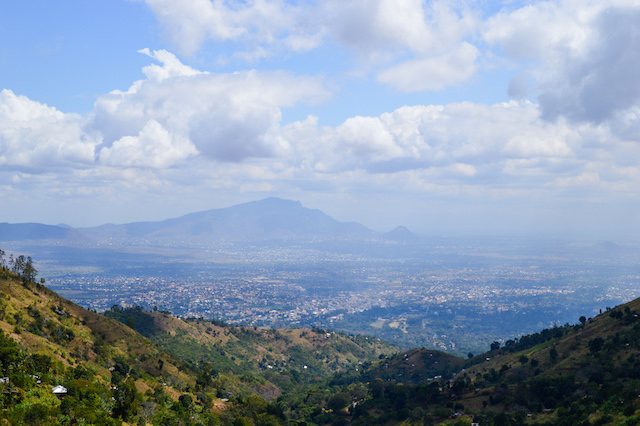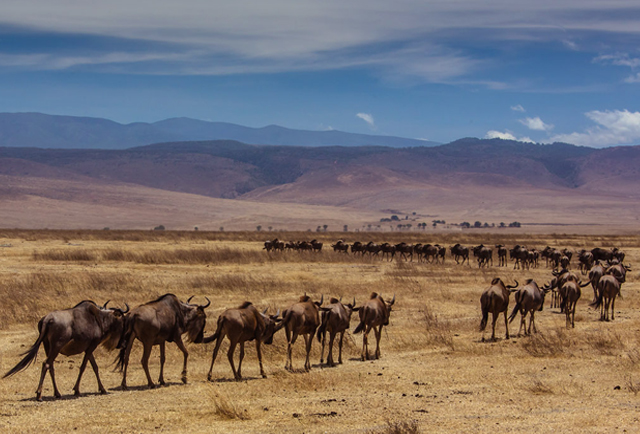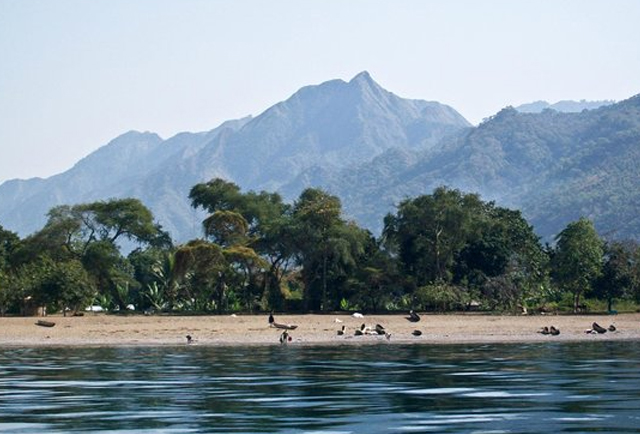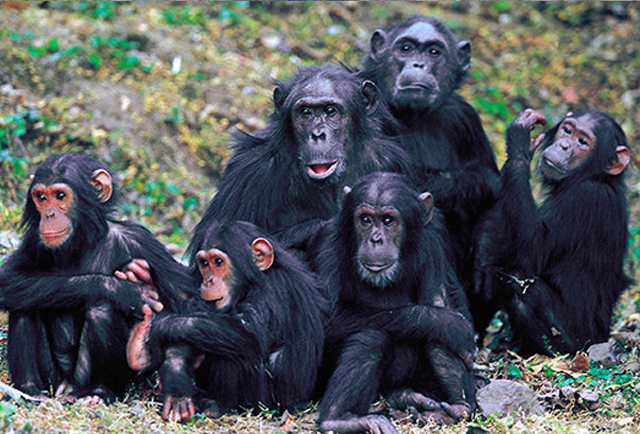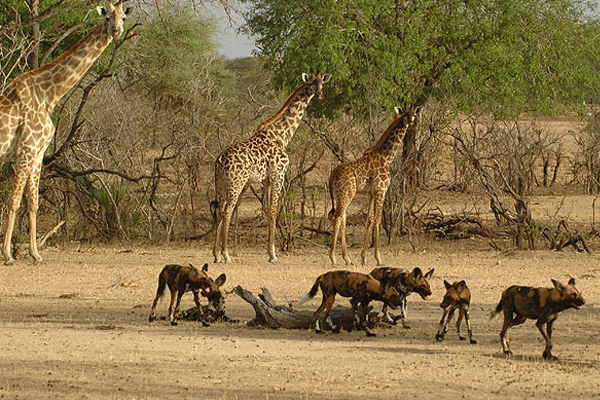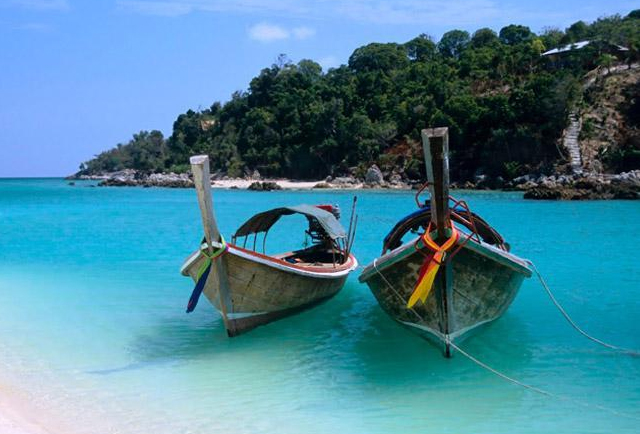Ngorongoro Conservation Area was established in 1959 as a multiple land use area, designated to promote the conservation of natural resources, safeguard the interests of Ngorongoro Conservation Area indigenous residents and promote tourism. The Ngorongoro Conservation Area (NCA), measuring 8,300 square kilometers, is also the only place on earth where mankind and wild animals co-exist in harmony, The Ngorongoro crater sinks to a depth of 610 meters, with a base area covering 260 square kilometers. The height of the original volcano must have ranged between 4,500 to 5,800 meters high. Apart from the main caldera, Ngorongoro also has two other volcanic craters: Olmoti and Empakai, the former famous for its stunning waterfalls, and the latter holding a deep lake and lush, green walls.
The area contains over 25,000 large animals including 26 black rhinoceros. There are 7,000 wildebeests, 4,000 zebras, 3,000 eland and 3,000 Grant’s and Thomson’s gazelles. The crater also has the densest known population of lions, numbering 62. Higher up, in the rainforests of the crater rim, are leopards, about 30 large elephants, mountain reedbuck and more than 4,000 buffalos, spotted hyenas, jackals, rare wild dogs, cheetahs, and other felines.
BEST KNOWN FOR
- This amazing area comprises archaeological sites, extinct and active volcanoes, breathtaking mountains, forests, vast lakes and magnificent wildlife.
- The Ngorongoro Crater is world famous for its World Heritage Site.
- Also has famous palaentological and archaeological sites: Olduvai Gorge, Laetoli site, Lake Ndutu site and Nasera Rock Shelter
- The Engakura Ruins (the remains of a terraced city and irrigation system) lie on the eastern side of the Empakaai Crater.
- Nominated as one of the contenders for the 7th Natural Wonder of the World.
- Together with the Serengeti National Park and the surrounding areas, the Ngorongoro Crater supports the greatest concentration of wildlife left on earth. If your lucky, you can view the big five (Buffalo, Elephant, Leopard, Lion and Rhino) among other african wild animals and birds.
- Spectacular view of the crater from the rim.High population of birds, making a good place for bird watching.
WHEN TO GO
Rainfall is seasonal and follows the altitudinal gradient varying from 500 mm per annum on the arid plains, to the west, to 1700 mm per annum on the forested slopes in the east.
Temperatures in the semi-arid plains vary from as low as 2 degrees to as high as 35 degrees celsius.
Anytime of the year is a good time to visit, as animals do not leave the lush grasslands of the crater.
ACTIVITIES
- Walking Safari on the Rim of the Crater
- Camp along the rim of the Crater.
- Game driving in and around the Crater.
- Visiting the masaai tribes’ village
- Visiting the oldest humans footsteps, at Old via Gorge
- Visiting the shifting sands





